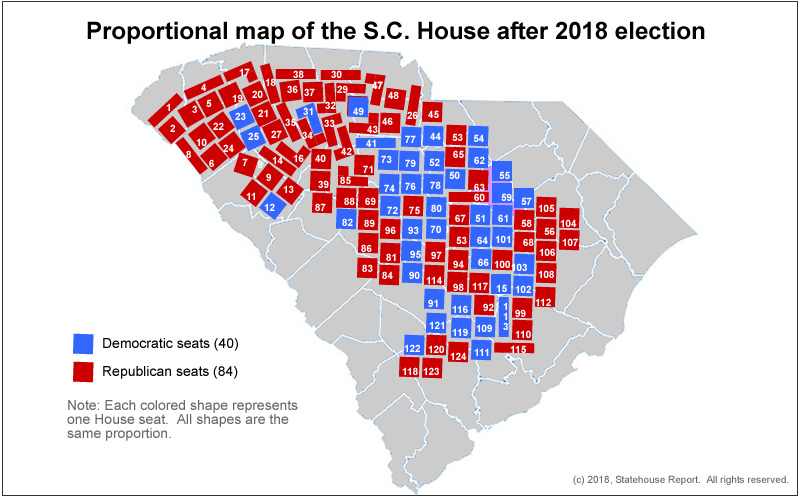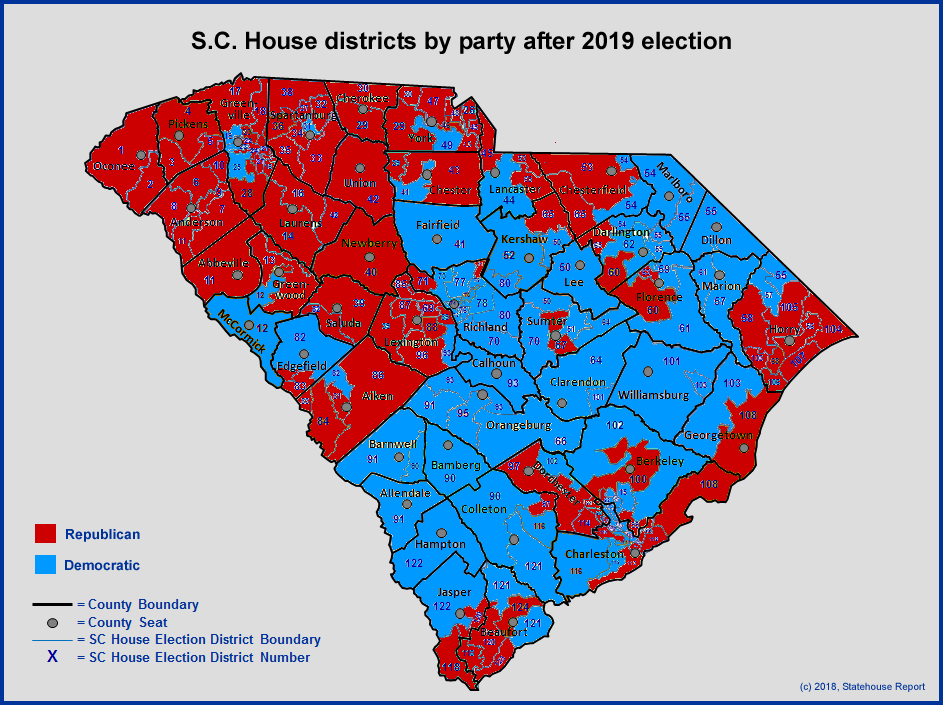
By Andy Brack, editor and publisher | One of the most interesting graphics that came out of the 2018 elections showed a proportional map of the make-up of the U.S. House of Representatives.
In the traditional way of looking at election maps, Republican districts are highlighted in red by their geographic shape and Democrats are reflected as blue. But these maps have an inherent problem: there’s a geography bias. A really large state with low population, such as Montana, may have just one House seat, compared to a tiny state with a bigger population, such as Rhode Island, which has two House seats. Yet on the map, Montana’s red overwhelms the blue of Rhode Island – even though it has twice the congressional voting power.
So The New York Times endeavored to equalize the geographic size of districts so each House district was represented by the same-sized shape. The result? The huge swath of Midwestern red, mostly in rural, lower-populated areas, seemed less visible. And contrastingly, the east and west coasts, which are more Democratic, balanced the red instead of being washed out. Overall, the parties looked more balanced – and the country looked more like a blue sandwich with red meat with an overall tint of purple.
Inspired by the Times’ proportional map, we wondered what a similar South Carolina map would show. The results are just as startling. Republicans totally dominate the Upstate, with Democrats holding just a handful of urban seats. (See map above.) Elsewhere, Democrats are competitive in the Columbia and Charleston areas. And while they hold a fair number of rural seats, in the middle and lower part of the state, the GOP dominance of the Upstate with outposts in Horry and Beaufort counties is readily apparent, compared to the geographic map (below), where Democrats look like they’re competitive with Republicans.

These maps offer at least two strategies:
Democrats: If the party wants to make inroads and retake the House (it needs a pickup of 23 new seats to do so), it’s going to have to start being competitive in the Upstate. Democrats have shown they can keep rural districts. Also, Democratic victories in two Lowcountry GOP seats that were flipped suggest ways to win. But to continue to offer few candidates in the Upstate will sentence Democrats to being a minority party.
Republicans: To bolster their dominance, Republicans can target rural seats where they may peel away voters favorable to President Donald Trump. Many of these districts, however, are gerrymandered to be more winnable for Democrats than Republicans.
- Have a comment? Send to: feedback@statehousereport.com















 We Can Do Better, South Carolina!
We Can Do Better, South Carolina!
Andy, isn’t 75 a red?
75 is red on the map. The Columbia area is so packed with districts that I put them in as best as they would fit.